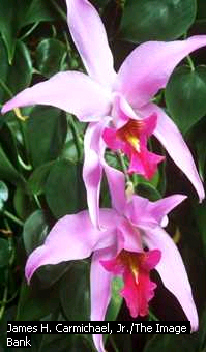
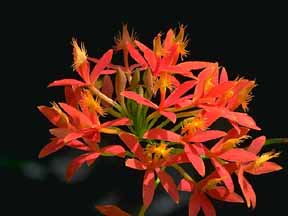 Orchids are perennial flowering plants found around the world, but
mostly in tropical areas. They have diverse flower forms that are
used to attract specific insects.
Orchids are perennial flowering plants found around the world, but
mostly in tropical areas. They have diverse flower forms that are
used to attract specific insects.Orchids

 Orchids are perennial flowering plants found around the world, but
mostly in tropical areas. They have diverse flower forms that are
used to attract specific insects.
Orchids are perennial flowering plants found around the world, but
mostly in tropical areas. They have diverse flower forms that are
used to attract specific insects.
James H. Carmichael, Jr./The Image Bank
The color and fragrance of a flower can provide useful information about the type of insect pollinator most often visiting the flower. Flowers with a sweet fragrance are usually pollinated by bees, while flowers with a putrid smell are usually pollinated by flies. Most orchids that are pollinated by flies also have other adaptations, such as shiny leaves and leaves covered with fine hairs, that help to attract flies.
Dorling Kindersley
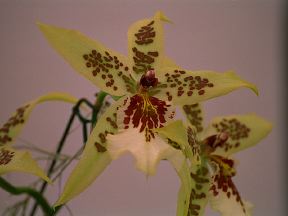
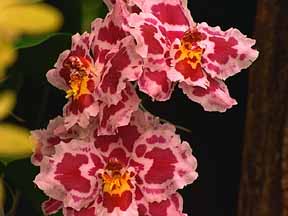
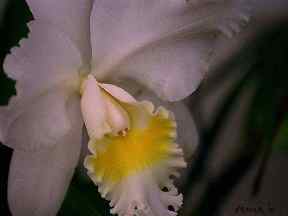
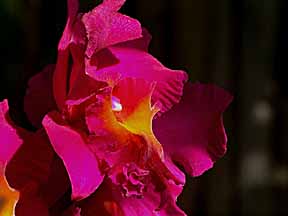
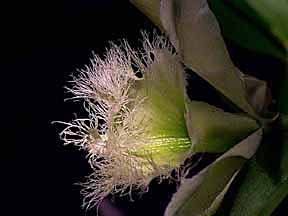
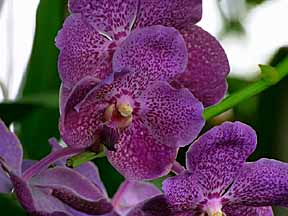
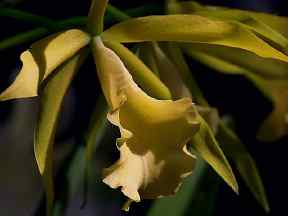
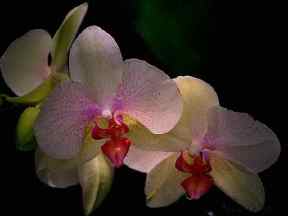
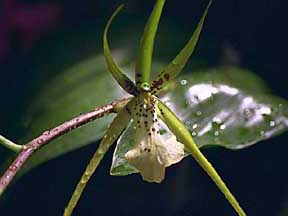
Orchid, common name for a family comprising one of the largest groups of flowering plants. The family is worldwide in distribution, being absent only from Antarctica and some of the most arid desert zones of Eurasia. The greatest diversity of genera and species occurs in tropical regions that remain poorly explored. For this reason, and because of the complexity of the family, estimates of the number of orchid species vary from 15,000 to 25,000, and the number of genera from 400 to 800.
 Orchids
are distinguished from other orders of flowering plants by a
combination of floral characteristics rather than by a single
characteristic unique to the group. Orchid flowers are borne on
stalks called pedicels, as are other flowers. During the growth and
development of the flower, however, the pedicel rotates 180°, so
that the mature orchid flower is borne upside down. Of the flower's
three sepals (outer floral whorls) and three petals (inner floral
whorls), all the sepals and the two lateral petals are usually
similar to one another in color and shape. The remaining petal,
always distinct from them, is called the labellum, or lip; it is
usually larger and different in color and shape, often being lobed or
cupped. The labellum, which often acts as a landing platform for the
orchid pollinator, may attract the pollinator to the flower through
particular color patterns and shapes to which the pollinator responds
in particular ways.
Orchids
are distinguished from other orders of flowering plants by a
combination of floral characteristics rather than by a single
characteristic unique to the group. Orchid flowers are borne on
stalks called pedicels, as are other flowers. During the growth and
development of the flower, however, the pedicel rotates 180°, so
that the mature orchid flower is borne upside down. Of the flower's
three sepals (outer floral whorls) and three petals (inner floral
whorls), all the sepals and the two lateral petals are usually
similar to one another in color and shape. The remaining petal,
always distinct from them, is called the labellum, or lip; it is
usually larger and different in color and shape, often being lobed or
cupped. The labellum, which often acts as a landing platform for the
orchid pollinator, may attract the pollinator to the flower through
particular color patterns and shapes to which the pollinator responds
in particular ways.
The sexual organs (pistil and stamens) of the orchid flower are fused together into a structure called the column, which lies opposite the lip. Orchids have only one stamen (male floral organ), and in most orchids it bears only one anther (pollen-producing structure); in a few orchids, however, two anthers are produced. The pollen is not granular, as it is in most flowering plants, but is aggregated together in a number of masses, or sacs, that vary in texture from mealy to horny. Three stigmatic lobes (pollen-receptive areas) are usually present and located near the anther, although usually only two are functional. The ovary is below the other flower parts and is surrounded by pedicel tissue. Tripartite, it contains numerous ovules (egg-bearing structures) that mature into seeds. The seeds are small, with only an undifferentiated embryo. As many as 2 million seeds may be produced from a single orchid seedpod. Unlike most other flowering plants, orchids have no food-storage tissue.
Orchid flowers are pollinated by a great variety of flying animals, and their great diversity in floral structure has resulted from adaptations to various pollinators. Bees pollinate about half the orchid species; moths, butterflies, flies, birds, and other agents pollinate the rest. Many orchid flowers are adapted for pollination by a single species of insect.
Orchids do not vary as much vegetatively as they do in floral structure, but a great variety of forms exist, reflecting the wide range of habitats they occupy. About half are epiphytic, growing on other plants for support only, but some are parasitic and others saprophytic (living on decaying vegetation). A few Australian species complete their life cycles entirely underground.
Apart from their phenomenal popularity as ornamental flowers, orchids have little economic importance, although vanilla flavoring is obtained from fruits of one tropical orchid species, the Mexican vanilla. Growers have produced thousands of new forms of orchids through hybridization.
Contributed By:
Marshall R. Crosby
"Orchid," Microsoft® Encarta® Encyclopedia 99. © 1993-1998 Microsoft Corporation. All rights reserved.